Double Gangway Lowbridge Layout
Double Gangway Lowbridge Layout
It seems that upstairs there were 8 rows of 3 seats each, and the rearward-looking view of the lower saloon reveals a low arch (but not quite as low as the side gangways) just as you step down onto the platform, which would be the consequence of having a partly-sunken cross-gangway across the forward end of the platform. John confirms that the stairs were pretty tight, as they would need to be to reach gangway height at a point that would still allow room for this putative cross-gangway within the platforn well. John tells me that he recalls (at the age of six!) the rearmost seat upstairs being immediately in front of the emergency window, but I would have thought that would limit headroom over the stairs.
Quite an exercise in shoehorning, but---gangways apart---what a handsome bus! For vehicles, I've always preferred straight lines to curves. Whenever I read something like "the rather angular lines of the 1934 model gave way to a more pleasing rounded style" I never find myself in agreement.
Ian Thompson
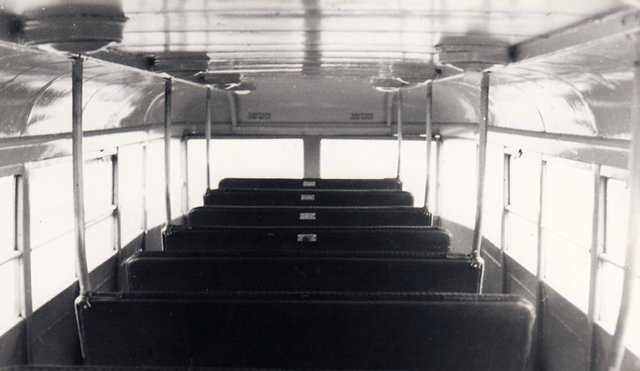 Upper deck looking forward
Upper deck looking forward
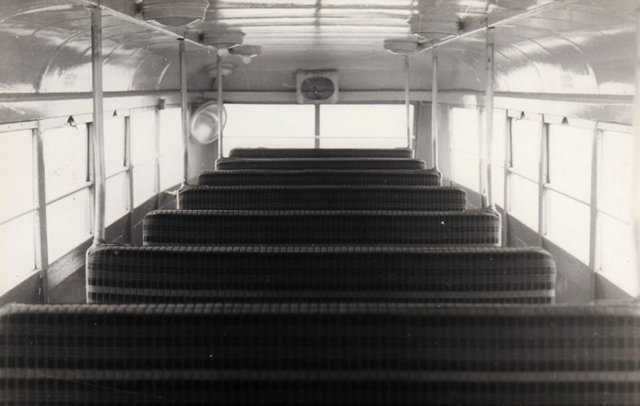 Upper deck looking rearward
Upper deck looking rearward
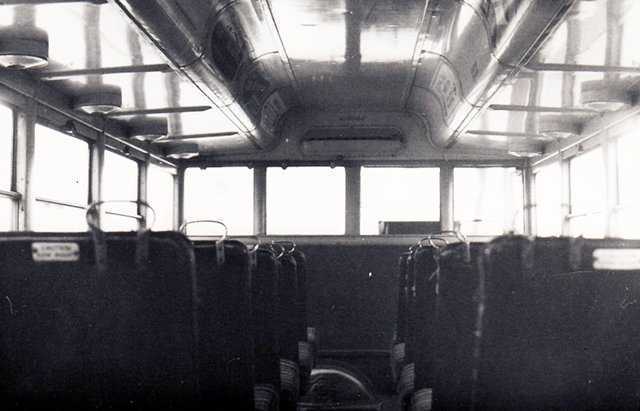 Lower deck looking forward
Lower deck looking forward
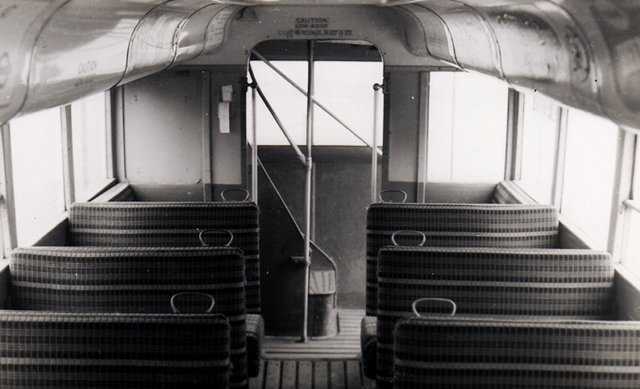 Lower deck looking rearward
Lower deck looking rearward
 Off-side exterior shot of London Transport ST 140 GF 7254
Off-side exterior shot of London Transport ST 140 GF 7254
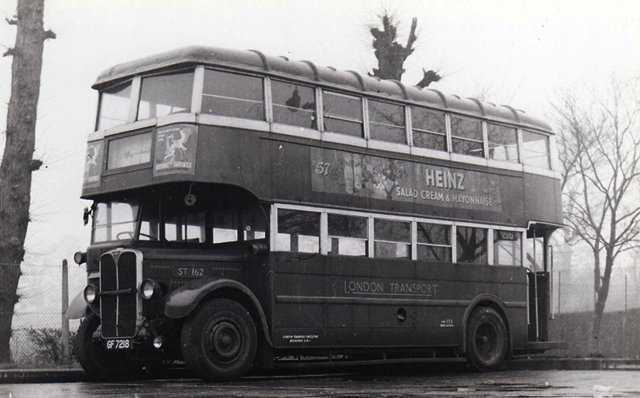 Near-side exterior shot of London Transport ST 162 GF 7218
Near-side exterior shot of London Transport ST 162 GF 7218
Photographs supplied by John Cupis taken by the late John C. Gilham
20/02/11 - 09:31
As one who thought that I knew a good bit about vehicles of the 1930s I can't thank Ian enough for these six incredible pictures. - I've often seen exterior views of these particular buses but I had no idea, until now, of what lay within. While the layout is astonishing, ingenious and interesting it has to be said that the inconvenience to passengers makes the normally accepted "lowbridge" layout seem almost like rocket science !! There simply must have been many a bruised head, especially amongst tall passengers and conductors, and the exposed light bulbs pointing downwards in the lower saloon must surely have been shattered sometimes by human heads ??
In 1969 a Leeds City Transport AEC Regent/Roe overturned one morning and virtually all passengers, more than sixty, were injured, many badly. I won't go into detail, but it was obvious that much harm had been caused by the cove mounted exposed bulbs, most or all of which had been broken by the victims' heads.
I agree to a large degree about the aesthetic appeal of "straight lines" in bodywork design - surely some of the most handsome vehicles ever must be the LGOC/London Transport ST and LT buses of the early 1930s - the "Bluebird" variants in particular.
Chris Youhill
20/02/11 - 19:41
My gut feeling is that it would be difficult to have a front cross passageway in a lowbridge body, because of the intrusion into the driver's cab ceiling. Unless, of course, you sacrificed a row or two of seats, but then it would intrude into the front of the downstairs saloon! The back is the only place, but it can be seen what a tight squeeze it was!This small group of six buses were very attractive and interesting. Over the decades, successive overhauls altered every one of them differently, so they finished unique. And the later Country Area ST's from 1032 to 1039 (the highest numbered, but actually the first ST), were equally varied and fascinating. I actually thought that the ST Bluebirds were a better-balanced body in style than the LT version, which were undoubtably the more impressive!
Chris Hebbron
24/02/11 - 21:47
I'm glad you liked the interior shots, Chris Y, though I know you have understandable sympathy for tall conductors! When John Cupis told me he had these photos I could scarcely believe it, as the only double-gangway shot I'd ever seen before is that of a herringbone-seated Hall Lewis body mounted on a 1928 Dennis, shown on p36 of Alan Townsin's "Park Royal Coachworks", Vol 1. It may just be an illusion, but the seats in the STs look wider than the required 4' 0", and the gangways rather narrow, which would certainly add to all the headbumping hazards. A very close look at these pictures suggests that there was actually no seat aft of the cross-gangway, at least on the bus illustrated, so that you'd reach the top of the stairs and find the cross-gangway (whether or not sunken) to your immediate left, with the rearmost seat immediately in front of it. John Cupis suggests that the Acton part of the London Transport Museum may have drawings, so I'll try to follow that one up. On page 43 of Ken Blacker's 1979 "Vintage Bus Annual" is shown a 1930 AEC Regent of Amersham & District with double-gangway Strachan body, where the top of the rearmost seat is about half a bay forward of the rear bulkhead, and on p 71 of Alan Townsin's "Blue Triangle" is a super-low (under 13' 0") Hall Lewis-bodied Regent with 7 visible rows of seats, but having the "crawl-across" space between the 6th and the 7th---so no chance of it's being sunken! There was obviously no one ideal solution...
Ian Thompson
Comments regarding the above are more than welcome please get in touch via the 'Contact Page' or by email at obp-admin@nwframpton.com
All rights to the design and layout of this website are reserved
Old Bus Photos from Saturday 25th April 2009 to Wednesday 3rd January 2024